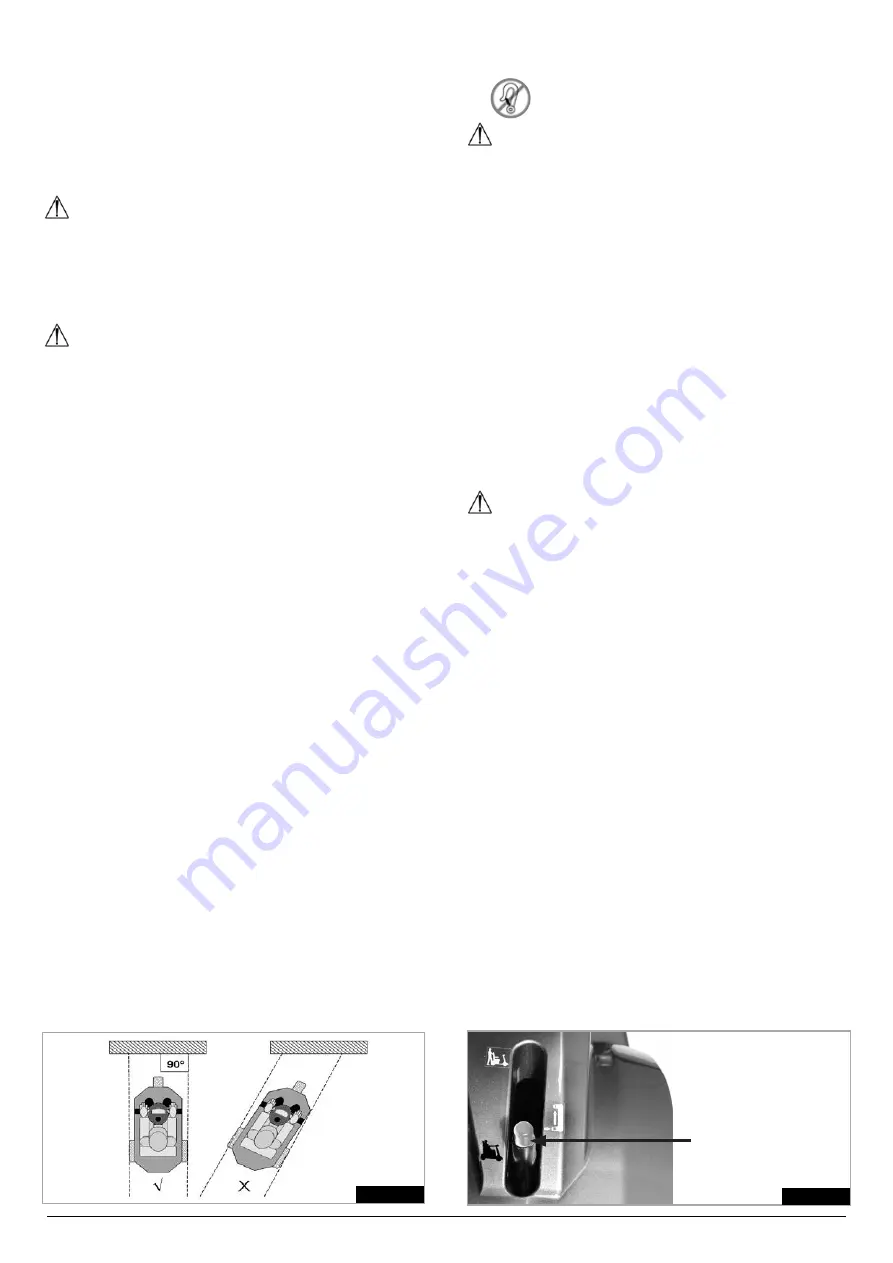
11
Fortress S-Series
4.5 tIreS:
The tires of a scooter suffer wear depending on how
much the scooter is used. Check them regularly,
especially for inflation pressure, according to the service
instructions in this manual.
Each tire pressure should be:
S425 = 2.7 bar (40 P.S.I.)
S700 = 2.7 bar (40 P.S.I.).
See Section 5.26 for solid tire information.
DANGer!
Never inflate the tires with a service station air pump. It
is recommended that you use a manual pump or a pump
fitted with a pressure regulator (manometer).
4.6 cUrbS, (FIG.4.1):
DANGer!
•
Be aware of other vehicles and pedestrians when
curb climbing.
•
Do not attempt to mount curbs in excess of 50 mm
(2”), for S425 or 100 mm (4”) for S700.
•
Always mount and dismount curbs with caution and
directly facing the curb.
•
Do not attempt to mount or dismount curbs in
reverse.
•
Do not attempt to descend from, a curb of more than
50 mm height.
•
Do not attempt to ascend high curbs, steep slopes or
cambers due to the risk of falling out of the scooter or
tipping over.
•
Do not attempt to ascend any curb in the vicinity of a
drain cover, uneven surfaces, or gravel covering.
•
Do not attempt to climb or descend any curb at an
oblique angle. Approach only at an angle of 90° with
at least 500 mm (20”) run-up.
•
Do not attempt curb climbing/descents when any of
the following accessories are fitted, rear storage bag,
rear mounted wheelchair/walker holder or oxygen
bottle holder, as they may cause the scooter to
become unstable.
FIG.4.1
4.7 trANSPortAtIoN IN VeHIcleS:
This scooter is not suitable to use as a seat in a vehicle.
Not crash tested
DANGer!
A scooter secured in a vehicle will not provide the
equivalent level of safety and security of a vehicle seating
system. It is always recommended that the user transfers
to the vehicle seating.
Note:
For transportation by road, rail, sea or air please
refer to Section 12, Shipping and Storage.
4.8 Free-WHeel DeVIce, (FIG.4.2):
The scooter has two modes of movement:
Drive or Free-wheel.
•
DRIVE = All movement, including braking, is
exclusively controlled by operation of the electronic
control system.
•
FREE-WHEEL = Movement is by manual means,
e.g. pushed or by gravity, (pot holes, curbs, hills or
inclines, etc).
Push the red knob down and forward to put the scooter
into free-wheel, (FIG.4.2).
DANGer!
•
Only use the free-wheel function to push the scooter
manually from one spot to another.
•
Keep in mind that while the free-wheel system is
in operation, the scooter is without an automatic
braking system.
•
Selecting free-wheel causes a loud audible warning
beeping tone from the scooter horn.
•
For safety reasons the scooter can no longer be
moved using the control levers.
•
Do not operate the free-wheel device while seated in
the scooter
•
The free-wheel device should only be operated by a
person who has the strength and agility to be able to
fully maneuver the scooter safely, during free-wheel.
•
Always put the scooter back in drive.
•
Always check that drive is engaged before using the
scooter.
•
Do not disengage the free-wheel on or near a slope.
•
Do not allow yourself to be pushed by others, or
towed, while the scooter is in free-wheel.
•
Do not allow clothing or items such as bags etc,
to come into contact with the free-wheel device,
particularly any items hanging or being carried on the
back of the scooter seat
FIG.4.2
Free-wheel
lever












































